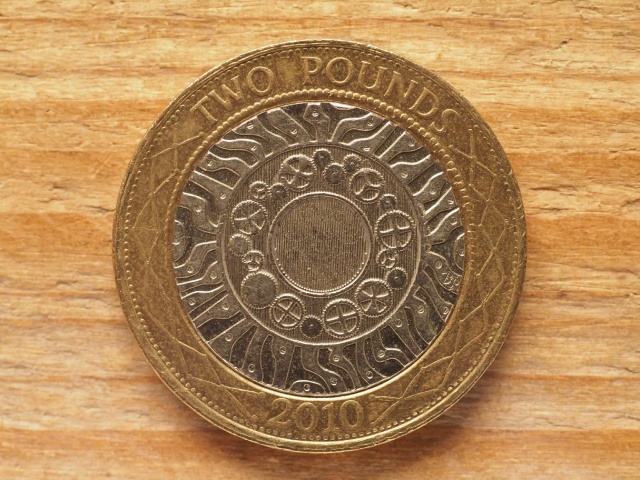There is Tom and John... (B1)
Subject-verb agreement (315)
Shoda podmětu se slovesem
Na Landigo se dnes zaměříme na případy, kdy nemusí být zcela jasné, jestli máme brát podmět jako jednotné nebo množné číslo. Podíváme se především na:
- Několikanásobný podmět (both Tom and John, either Tom or John...)
- Spojení, která bereme běžně jako jeden celek (fifty dollars, two weeks...)
Shoda podmětu se slovesem – procvičování:
Pokročilejší lekce na stejné téma: Shoda podmětu se slovesem (B2)
Usually, no more than two seconds separates the winner from the runner-up.
| Jeden celek: |
| Two seconds separate separates... |


Obecně platí:
- Podmět v jednotném čísle + sloveso v jednotném čísle (he is, she is...)
- Podmět v množném čísle + sloveso v množném čísle (they are, we are...)
V některých případech nemusí být zcela jasné, jestli máme použít sloveso v jednotném nebo množném čísle:
| ...and... |
Tom and John are here.
|
| Either...or... Neither...nor... |
Either Tom or John is here.
|
| There is/are... |
There is Tom and John.
|
| Čas, váha, cena... |
Fifty dollars is enough.
|
| Procenta: |
Fifty percent is enough.
|
Tom and John are...
Pokud má podmět dva nebo více členů spojených pomocí AND, použijeme obvykle sloveso v množném čísle:
|
My sister, Tom and John have been getting along well.
|
|
Are Tom and John still friends?
|
|
Both Tom and John are going bowling.
|
Both Mitch and I are on our way to Australia.
|
Mitch and I are
|
|
both Mitch and I are
|


Either Tom or John is/are...
S vazbami EITHER...OR... (buď...nebo...) a NEITHER...NOR... (ani...ani...) používáme číslo slovesa podle bližší části podmětu:
|
Either you or your brother has to help me.
|
|
Either you or your brothers have to help me.
|
|
Neither you nor your brother has helped me.
|
|
Neither you nor your brothers have helped me.
|
V hovorové angličtině je také možné použít:
|
Either you or your brother have to help me.
|
|
Neither you nor your brother have helped me.
|
Either Mrs. Hill or her employees are still in the shop.
|
either Mrs. Hill or her employees are
|
|
either Mrs. Hill or her employee is
|


Neither I nor Tina has cooked tonight.
| Neutrální: |
Neither I nor Tina has cooked.
|
| Hovorové: |
Neither I nor Tina have cooked.
|


There is Tom and John...
S vazbou THERE IS/ARE používáme číslo slovesa podle bližší části podmětu:
|
There is Tom and your brothers.
|
|
There are your brothers and Tom.
|
|
Was there Tom and your brothers?
|
|
Were there your brothers and Tom?
|
There's a cat and a dog playing outside. Have you seen them?
| There is a cat and a dog... |
| There are cats and a dog... |


Were there any other details and information I should know about?
| Were there any details and information...? |
| Was there any detail and information...? |


Vzdálenost, čas, váha, cena = 1 celek
Obvykle považujeme vzdálenost, časové trvání/období, váhu, finanční částku apod. za jeden celek (= jednotné číslo):
|
How long does 25 miles take you to drive?
|
Za jak dlouho ujedeš 25 mil? |
|
Twelve months was a long time to wait.
|
Čekat dvanáct měsíců byla dlouhá doba. |
|
Five hundred grams of sugar is enough for at least 20 cookies.
|
Pět set gramů cukru bude stačit alespoň na dvacet sušenek. |
|
Ten dollars is a great deal of money to a child.
|
Deset dolarů je pro dítě hodně peněz. |
Všimněte si, že v češtině používáme v těchto případech také jednotné číslo (byla, bude, je).
Five euros is a great price for three kilos of fresh fruit.
| Jeden celek: |
| Five euros are is... |


Pokud po vazbě THERE... používáme vzdálenost, čas, váhu atd. něčeho v množném čísle, je obvykle sloveso v množném čísle:
|
There are four more stops before we get off.
|
Než vystoupíme, čekají nás ještě čtyři zastávky. |
|
There were ten dollars in the wallet.
|
V peněžence bylo deset dolarů. |
Hurry up! There are only two minutes left before the game starts.
| There are two minutes... |
| There are two metres... |
| There are two pounds... |


Jídlo = 1 celek
Často bereme název jídla jako 1 celek, proto s ním používáme sloveso v jednotném čísle. Platí to i pro spojení více slovíček pomocí AND (fish and chips, meat pie and potatoes...):
|
Baked beans is my favourite breakfast.
|
|
Was fish and chips on the menu?
|
Fish and chips is a popular English hot dish consisting of fried fish in crispy batter served with potato chips.
| Jedno jídlo: |
| Fish and chips are is... |


How are these vegetables prepared? Do you have to boil them first?
| Zelenina obecně: |
|
How are these vegetables prepared?
|


10% is, 10% of the people are...
Procenta se používají často se slovesem v jednotném čísle:
|
Only 40 percent was happy with the purchase.
|
|
More than 60 percent has been destroyed.
|
Pokud je po procentech spojení OF + podstatné jméno v množném čísle (people, trees...), použijeme sloveso v množném čísle:
|
Only 40 percent of people were happy.
|
|
More than 60 percent of trees have been destroyed.
|
Almost twenty percent is missing. How is that possible?
| Twenty percent is... |
| Twenty percent are... |


Sixty percent of our students are either Black or Hispanic.
| Sixty percent of our students are... |
| Sixty percent of our class is... |
| Sixty percent is... |


Five pound banknote, two-week holiday...
Na závěr poznámka o složeninách (psaných zvlášť nebo spojených spojovníky) – jejich první část je obvykle v jednotném čísle, i když vyjadřuje množné číslo:
|
a peach tree
|
a tree producing peaches
|
|
a two-week holiday
|
a holiday of two weeks
|
|
a twenty-page story
|
a story containing twenty pages
|
Neříkáme: a peachES tree, a two-weekS holiday, a twenty-pageS story












We have a ten-hour layover in Barcelona. How about going sightseeing?
|
a ten-hours layover
|
|
a two-days journey
|
|
a four-weeks vacation
|


Shoda podmětu se slovesem (subject-verb agreement) – nejdůležitější body:
|
Tom and my friend are here.
|
|
Either Tom or my friend is here.
Either Tom or my friends are here.
|
|
There is Tom and my friends.
There are my friends and Tom.
|
|
Ten dollars is enough.
|
|
Ten percent is enough.
Ten percent of the apples are enough.
|
|
a ten-dollar banknote
two ten-dollar banknotes
|
Doporučujeme si procvičit shodu podmětu se slovesem (subject-verb agreement) v našich cvičeních.
